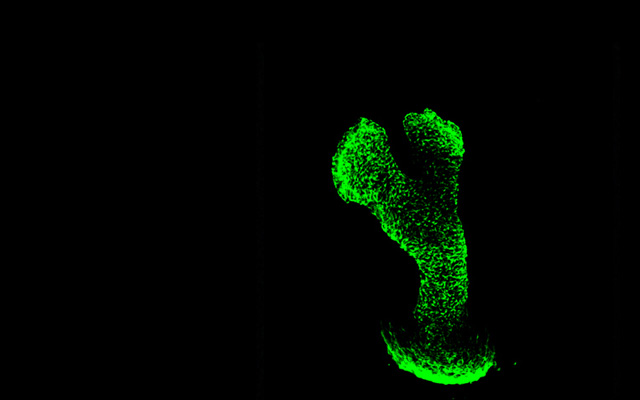The Role and Mechanism of Proteinase 3 in Ferroptosis-Associated Acute Lung Injury
ZHAO Hongfei1,2, LIU Huan1,2, SHAO Ya1,2, ZHAO Zihan1,2, ZHANG Shiyue1,2, ZHAO Hongrun1,2, LIU Yuexin1,2, CHENG Tianran1,2, SUN Lu1,2, XI Jingwen1,2, WANG Tong1,2, XU Yuanfu1,2*
This study investigates the role of PRTN3 (proteinase 3) in sepsis-induced ALI (acute lung injury) and its potential regulatory mechanisms. WT (wild-type) and Prtn3–/– (Prtn3 knockout) mice were used to establish sepsis and ALI models through intraperitoneal injection of different doses of LPS (lipopolysaccharide) (50 mg/kg and 10 mg/kg, respectively). Hematological analysis was performed to examine the number and proportion of different blood cell types in the BALF (bronchoalveolar lavage fluid). qRT-PCR was used to analyze the expression changes of inflammatory cytokines and ferroptosis-related genes in mouse lung tissues. The effects of Prtn3 deletion on ferroptosis in neutrophils treated with the ferroptosis inducer RSL3 were assessed using immunofluorescence, ELISA, and qRT-PCR. RNA sequencing was conducted to explore the potential molecular mechanisms by which Prtn3 regulates neutrophil ferroptosis. The results showed that Prtn3 deficiency significantly improved the overall survival rate of LPS-induced septic mice (P<0.05). Histopathological and hematological analysis indicated that Prtn3 deficiency markedly reduced pathological changes and inflammatory responses associated with sepsis-induced ALI (P<0.05). The qRT-PCR results demonstrated that the expression levels of ferroptosis markers such as Slc7a11 and Gpx4 in lung tissues of Prtn3–/–+LPS mice were significantly higher than those in the WT+LPS group. In vitro experiments demonstrated that RSL3-treated neutrophils exhibited dose-dependent increases in iron levels and lipid peroxidation products, including 4-HNE and MDA (P<0.05). ELISA, immunofluorescence, and qRT-PCR analyses showed that Prtn3 knockout inhibited RSL3-induced iron accumulation, significantly increased Gpx4 levels, and reduced lipid peroxidation product content. RNA sequencing analysis revealed that the expression of genes associated with ROS metabolism, inflammatory response, TNF signaling pathway, Toll-like receptor signaling pathway, NF-kappa B signaling pathway, and severe inflammatory infections was significantly changed in the RSL3+Prtn3–/– group. In conclusion, Prtn3 deficiency reduces sepsis-induced ALI by inhibiting neutrophil ferroptosis. Targeting Prtn3 to suppress ferroptosis presents a novel and effective strategy for alleviating sepsis-induced ALI.




 CN
CN EN
EN